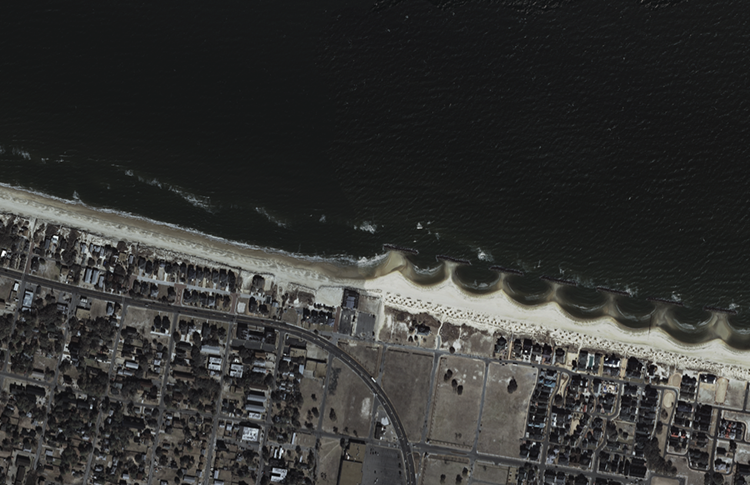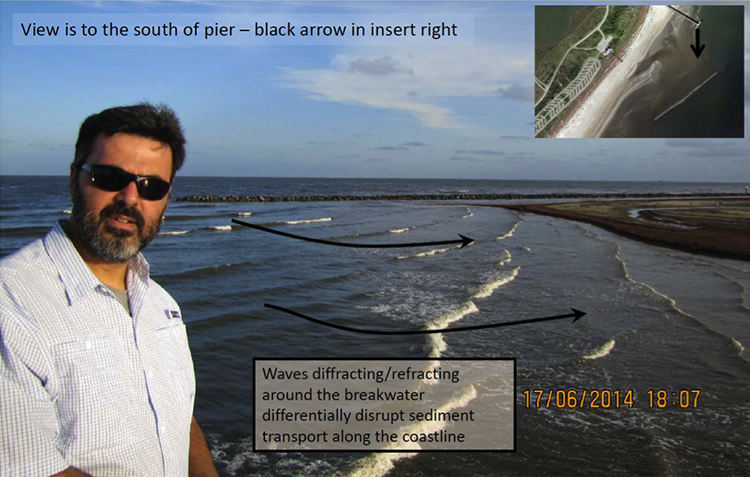Detached Breakwaters
Detached breakwaters are small, relatively short, non-shore-connected nearshore breakwaters with the principal function of reducing beach erosion. They are built parallel to the shore just seaward of the shoreline in shallow water depths, using solid concrete structures, piles of stone/concrete blocks, or rubble mound. Multiple detached breakwaters spaced along the shoreline can provide protection to substantial shoreline frontages. The gaps between the breakwaters are in most cases on the same order of magnitude as the length of one individual structure. Each breakwater reflects and dissipates some of the incoming wave energy, thus reducing wave heights in the lee of the structure, interrupting transport along the shore, and reducing shore erosion. Beach material transported along the beach moves into the sheltered area behind the breakwater, where it is deposited in the lower wave energy region. The nearshore wave pattern, which is strongly influenced by diffraction* at the heads of the structures, will cause salients and sometimes tombolos to be formed, thus producing a shoreline similar to a series of pocket beaches. Once formed, there is positive feedback: the pockets will cause wave refraction, which helps to stabilize the pocket-shaped coastline. Breakwaters can also be constructed with one end linked to the shore, in which case they are usually classified as sea walls.
Recommended Reading
Read over Marine Biodiversity Wiki: Detached Breakwaters to learn about these features.
The figures below illustrate the formation of salients (cusps of sediment protruding from the shore) and tombolos (larger cusps that attach to the breakwater), to form the pockets described above.


*(for a definition of Diffraction visit the Coastal Wiki website).
